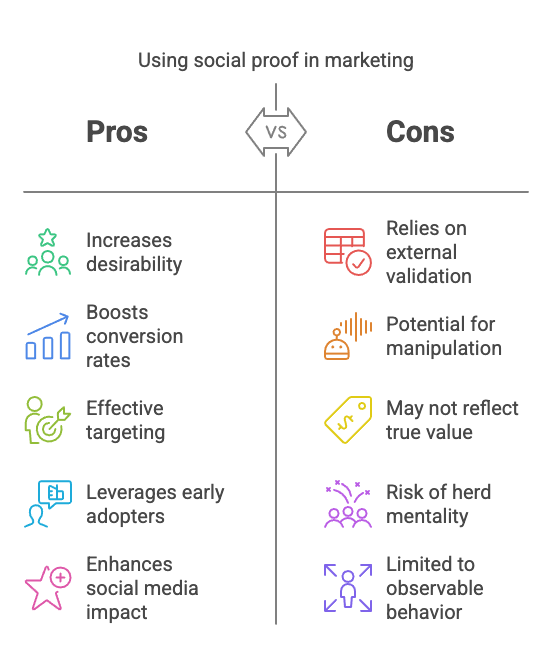One of the major psychological foundations for the purported effectiveness of social media marketing is social proof.
What is Social Proof?
The idea is fairly simple: people are more likely to find a product or service appealing if there is evidence that other people find it desirable. Robert B. Cialdini, in his very popular Influence: Science and Practice, describes social proof as
an important means that people use to decide what to believe or how to act in a situation by looking at what other people are believing or doing.
We are social animals. Signals from our peers significantly influence whether we desire particular objects. In social networking, people put this principle into practice. They actively pursue “likes” or “+1s”. Consumers also actively seek visible evidence of engagement and approval for products and brands.
The Skepticism Around Social Proof
However, many business owners are somewhat dubious as to the value of pursuing social proof on social networks as opposed to investing in more traditional methods of marketing. To a degree, their skepticism is valid.
Businesses are not interested in how many people “like” their brand, if that approval doesn’t result in conversions. “Likes” are worse than worthless if the result is not an increased conversion rate in the medium to long term.
Pursuing “likes” for their own sake is indeed less effective than working towards establishing a community of engaged and enthusiastic consumers, but there is significant evidence, both theoretical and neurological, that social proof does have an impact on shaping desires and goals – so-called goal contagion.
Mimetic Desire: The Origin of Our Wants
René Girard, a French historian and philosopher, posited the concept of mimetic desire to explain where desires originate. Girard was mostly concerned with literary analysis and philosophy, but mimetic desire as he construes it has considerable bearing on social proof.
Girard believes that all human desires are provoked by the desire of another individual. That is, we don’t have desires at all unless it’s demonstrated that similar desires exist in other people.
This should make intuitive sense to marketers whose job is to manufacture desire. Targeting marketing at vocal early adopters, who then communicate the desirability of a product to increasingly expanding circles, is a tried and tested technique for generating interest. The same principle can be applied to social networking. A sufficient quantity of conspicuous approval on social media can help to create approval in users.

The Neuroscience of Social Proof
Earlier this year, a group of neuroscientists in Paris tested Girard’s theory. These researchers were from the Institut du Cerveau et de la Moelle épinière and included Mael Lebreton and Baudouin Forgeot d’Arc.
They had a group of subjects carry out various tasks. While the subjects performed these tasks, scientists scanned their brains with an fMRI machine. This machine measures brain activity. The results seemed to support Girard and Cialdini’s contention. They also suggested a neurological mechanism for how mimetic desire and social proof work.
For a detailed explanation of the methods and results, you should read the original paper. However, to summarize, the experimenters made an observation. The subjective desirability of objects increased.
This happened after individuals perceived that those objects were the goals of another person’s actions. In other words, if someone wants an object, other people’s desire for it increases. This occurs because the part of our brains that mirrors other people’s actions (the mirror neuron system) affects the part of our brain that determines value (the Brain Valuation System in the ventral striatoprefrontal network).
The Takeaway for Marketers
The take-home message here is that social proof and conspicuous endorsement and displays of approval on social media are likely to have positive effect on conversion rates.




